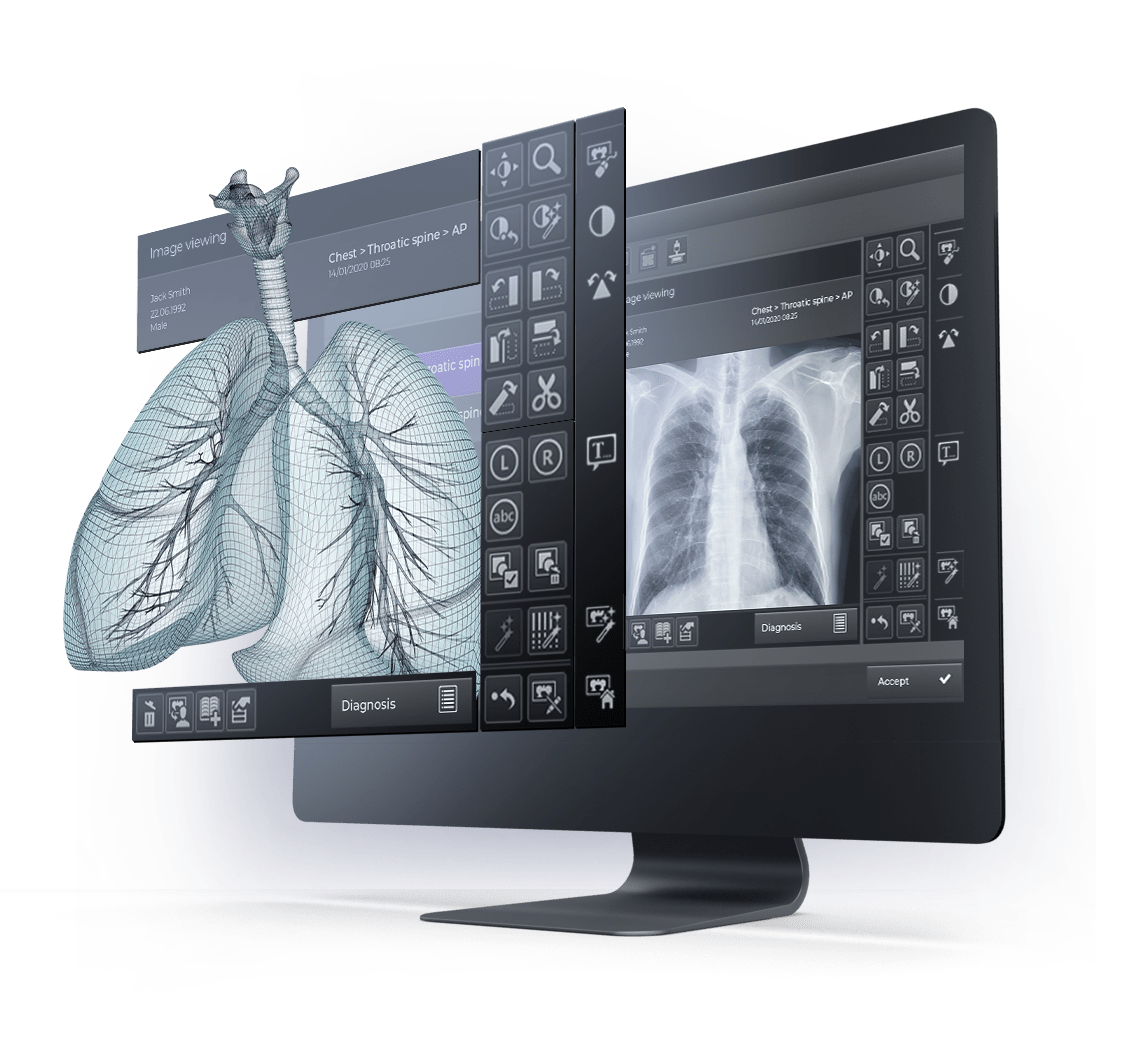Machine learning expertise
Leverage our computer vision capabilities to take image analysis up a notch by unveiling deviations from the norm in human cells and organs. Such anomaly detection allows revealing suspicious areas before a malignant tumor appears.
AR and VR know-how
We have the right knowledge and tools to convert CTs, MRIs, and other scans into high-quality 3D images. Such an immersive experience will enable physicians to examine every layer of a patient’s anatomy and conduct a virtual run-through of the most complicated surgical procedures.
Technical excellence
We’re a team of subject-matter experts who work with all major medical image formats, including DICOM, Analyze, MINC, NIfTI, and ECAT7. We also adhere to key industry standards — such as HIPAA, FHIR, IEC 62304:2006 / Amd 1:2015, and more — to ensure rock-solid usability, security, and interoperability for your medical image software.

















